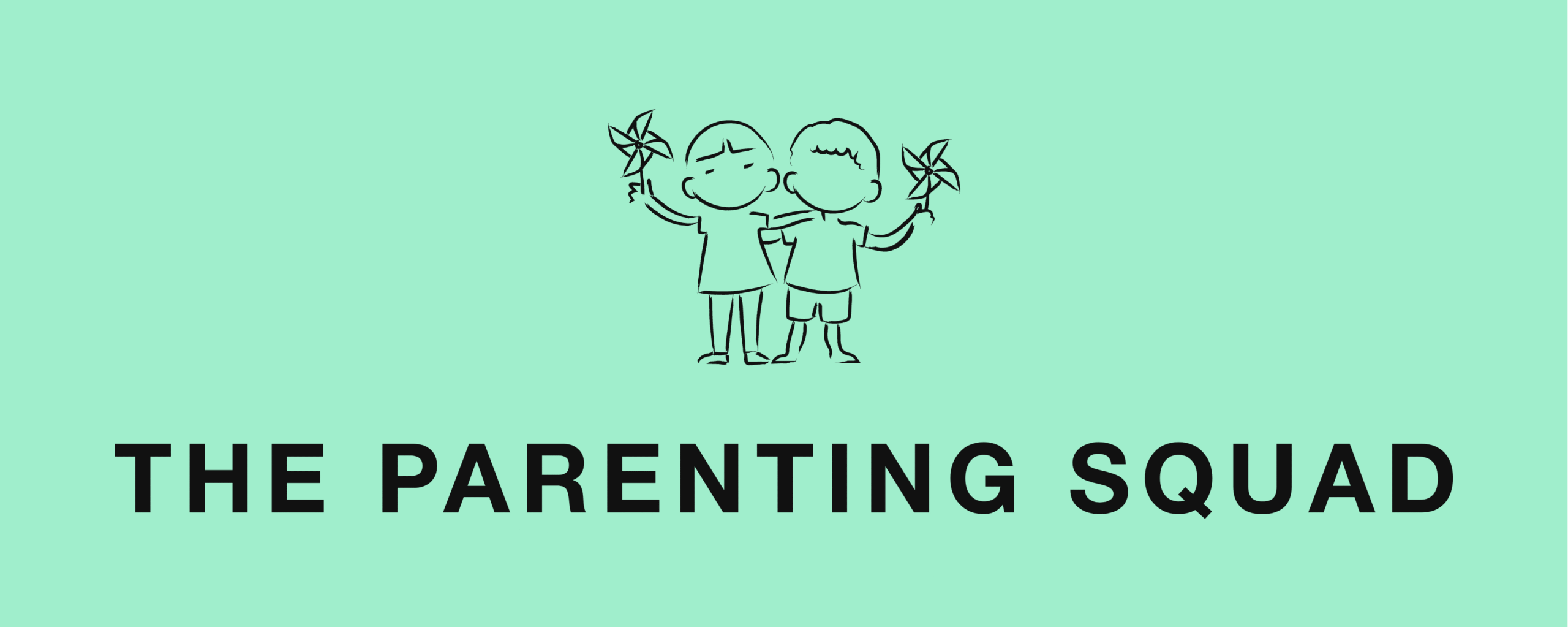“Yes, you have to wear shoes to school.” Sound familiar? You’re not alone if you’ve ever found yourself in a full-blown negotiation with a 4-year-old over basic life requirements. Most parents have been there—standing in the kitchen at 7:30 am, coffee getting cold, while debating the merits of footwear with someone who thinks cereal counts as a vegetable.
Reflect on your needs, values, and boundaries to build a foundation for responsible parenting. This self-reflection is the first step to setting healthy boundaries in your family.
The truth is, every parent wants to set healthy boundaries without becoming the neighborhood yelling champion. We all dream of being that calm, collected parent who handles meltdowns with grace and authority. The good news is it’s possible to raise responsible, well-behaved kids without losing your sanity or voice—even when you feel overwhelmed by the daily chaos and constant negotiations.
Setting healthy boundaries isn’t just about keeping peace in your home (though that’s a nice bonus). It’s about teaching your children life skills like self-discipline, respect, and empathy while giving them the security of knowing what to expect. Ready to turn those daily power struggles into opportunities for connection and growth? Let’s explore some practical, gentle techniques that work.
Calm Parenting Introduction
Parenting in today’s world can feel like a high-wire act—balancing your child’s needs, your well-being, and the constant stream of advice from every direction. Calm parenting is a refreshing approach: it’s all about setting healthy boundaries while maintaining a sense of self-respect and nurturing positive relationships with your kids. Instead of reacting to every challenge with frustration or anxiety, calm parenting encourages you to respond thoughtfully and model the behavior you want your children to adopt.
Children benefit from clear boundaries that help them feel safe and understood from a young age. These boundaries aren’t just rules—they’re the foundation for building self-esteem, emotional intelligence, and lasting well-being. When parents take the time to engage with their children, spend quality time together, and communicate openly, they create an environment where kids can thrive even in the face of mental health issues or everyday stressors.
Calm parenting is about more than just keeping the peace; it’s about maintaining healthy relationships and teaching your children how to navigate life’s ups and downs with confidence and respect. By modeling healthy behavior and prioritising connection, you’re giving your kids the tools they need to build strong, respectful relationships throughout their lives.
Ultimately, calm parenting helps parents and children feel more grounded, connected, and ready to take on the world—one peaceful conversation at a time.
Why Setting Healthy Boundaries is Key to Responsible Parenting
Think of boundaries like the guardrails on a mountain highway—they’re not there to ruin the fun but to keep everyone safe while they navigate the twists and turns ahead. Setting clear, consistent boundaries teaches your kids self-discipline, respect for others, and empathy. More importantly, you give them a roadmap for confidently navigating the world. It’s essential to understand the difference between healthy boundaries, which foster growth and respect, and unhealthy boundaries, which can be too rigid or loose and may harm your child’s well-being.
Children crave structure even when they’re pushing against it. The limits you set become a source of security, helping them understand what’s expected and what they can count on. When kids know the rules, they can focus on learning, growing, and being kids instead of constantly testing where the lines are drawn.
Here’s where many well-meaning parents go off track: they resort to yelling or losing emotional control when boundaries get challenged. But here’s the thing—when we shout to enforce rules, we accidentally teach our kids that raising your voice is how you handle frustration. Not exactly the lesson we’re going for, right? Instead, it’s crucial to establish a clear consequence for boundary violations and to follow through consistently so children learn that boundaries are meaningful and must be respected.
One parent in our community shared how boundary setting transformed their household: “Bedtime used to be a nightly shouting match that left everyone exhausted and upset. Once I started setting clear expectations and sticking to them calmly, bedtime became this peaceful routine we all look forward to. Who knew consistency could be so magical?”
The key to responsible parenting isn’t being the strictest parent on the block—it’s being the most consistent and calm one, strengthening your relationship with your child.
Common Challenges Parents Face When Setting Boundaries
Let’s be real about the obstacles we’re all dealing with. Kids are naturally wired to test limits—figuring out how the world works is their job. So when your six-year-old asks “But why can’t I have cookies for breakfast?” for the fifteenth time this week, remember they’re not trying to drive you crazy (though it might feel that way). They’re doing exactly what they’re supposed to do: learning.
Every parent experiences different emotional challenges. Maybe you’re running on three hours of sleep and completely emotionally and physically exhausted. Or perhaps you’re dealing with a very public meltdown in aisle five of the grocery store while other shoppers offer those “helpful” looks. Because who doesn’t love an audience during their parenting low moments?
Then there’s the guilt factor. Many parents struggle with saying “no” because they want their kids to be happy or worry about being too strict. But here’s a gentle reminder: disappointing your child occasionally is not the same as damaging them. Learning to handle disappointment is one of the most valuable life skills you can teach.
The good news is that every challenge you face is completely normal and manageable with the right approach.
7 Gentle Yet Effective Techniques for Setting Healthy Boundaries
1. Start with Clear Expectations
Specificity is your best friend when it comes to setting boundaries. The words you choose matter—using the right word can clarify your expectations and help your child understand exactly what you mean. Instead of saying “be good,” try “shoes belong by the door, not on the couch” or “we use inside voices when we’re in the house”. When expectations are crystal clear, kids know exactly what success looks like.
Try a script: “When we enter, we hang up our backpack and put our shoes by the door. Then we wash our hands before snack time.” Repeat it like a loving broken record until it becomes routine. The key is staying calm and consistent even when you feel like you’ve said the same thing 847 times.
2. Give Choices, Not Ultimatums
Kids love feeling like they have some control over their lives (don’t we all?). Instead of backing them into a corner, offer two options you’re happy with. “You can brush your teeth now while I help your sister get ready or after this show ends” gives them autonomy while keeping your evening routine on track. This works because it flips the dynamic from “parent versus child” to “child making good decisions within safe parameters”. Plus, it cuts out the power struggles that can turn simple tasks into epic battles.
3. Learn Active Listening
Sometimes kids push against boundaries because they feel unheard, not because they don’t understand the rule. When setting boundaries, it’s essential to consider the feelings of the person involved, making sure the child feels respected and heard. Try acknowledging their feelings while holding firm on your expectation: “I can see you’re frustrated about cleaning up right now, and that’s okay. We still need to put the toys away before dinner, and I’m happy to help you get started.”
This validates their feelings without negotiating away your boundary. It shows them you understand their feelings while teaching them that feelings don’t change expectations.
4. Stay Calm and Model the Behaviour You Want to See
This one’s easier said than done, especially when you’re exhausted and running on three hours of sleep. But your tone and body language communicate just as much as your words. When you stay calm during challenging moments, you show your kids how to handle frustration healthily. Remember, you are human; making mistakes is part of being human, and showing self-compassion in those moments helps you and your child grow.
Try this quick mindfulness technique when you feel anger rising: take three deep breaths, lower your voice, and remind yourself that this moment is teaching your child something important. Sometimes, taking a brief pause to collect yourself is the most powerful parenting tool you have.
5. Set Clear and Consistent Boundaries
Consistency builds trust and security. When rules change based on mood or energy level, kids learn to test boundaries constantly because they never know which version of the rule is actually in effect. Decide on your non-negotiables and stick to them even on tough days.
This doesn’t mean you can’t be flexible when it makes sense, but major boundaries should remain steady. If bedtime is 8 PM on school nights, it’s 8 PM whether you’ve had an excellent or challenging day. Remember, maintaining consistency also means recognizing when you or your child needs to rest—allowing for breaks and downtime helps everyone recharge and stick to routines more effectively.
6. Use Positive Reinforcement
Catch your kids being good and celebrate it! Positive reinforcement is potent for encouraging the behaviour you want to see. When your child follows through on a boundary without pushback, acknowledge it: “I noticed you put your dishes in the sink without being reminded. That was helpful!”
Examples of positive reinforcement include praising your child for sharing toys, giving a sticker for finishing homework, or offering extra story time when they help clean up.
For younger kids, sticker charts or a “high-five jar” can make following rules rewarding rather than restrictive. The goal is to help them associate good choices with positive feelings.
7. Practice Patience with the Process
Boundary setting is a long game with incredible rewards, but it’s not an overnight transformation. Many parents gradually realise that setting boundaries is a long-term process that requires patience and consistency. Expect some pushback—it’s a sign that your boundaries are working and your child is learning to navigate limits.
Nurturing Emotional Intelligence with Love Languages
Helping your child develop emotional intelligence is one of the most important things you can do as a parent. One powerful way to nurture this skill is by using the five love languages: words of affirmation, quality time, receiving gifts, acts of service, and physical touch. Every child has their way of feeling loved, and when parents take the time to identify and speak their child’s love language, it creates a deeper sense of connection and trust.
Using the five love languages in your parenting toolkit isn’t just about making your child feel good—it’s also a practical way to set boundaries and communicate expectations. For example, if your child thrives on quality time, spending a few focused minutes together before discussing essential things can make them more receptive to hearing about boundaries or consequences. If words of affirmation are their love language, acknowledging their efforts with positive words can reinforce self-respect and self-esteem, making boundary setting feel less like a punishment and more like a partnership.
By weaving love languages into your daily interactions, you’re reducing conflict and teaching your child how to express their own needs and respect the needs of others. This helps children feel valued and understood, which is essential for building healthy relationships in all areas of life. Ultimately, nurturing emotional intelligence through love languages empowers your child to communicate, respond to challenges, and create meaningful connections—skills that will serve them well beyond childhood.
You’re Doing it Right (Even if it Doesn’t Feel Like It)
Something that might surprise you is that pushback from kids is a good sign. It means they’re testing to see if you really mean what you say, and when you stay consistent, they learn they can count on you. That’s the foundation of trust and security.
Look for these subtle signs of success: fewer arguments over the small stuff, increased cooperation over time, or moments when your child self-corrects their behaviour without prompting. Setting clear boundaries can lead to increased collaboration and self-correction as children begin to understand expectations and take responsibility for their actions. Maybe they start putting their shoes by the door without being asked, or they use their inside voice without a reminder.
Remember, even the most strong-willed kids secretly thrive on structure. They might not thank you in the moment, but clear boundaries help them feel safe and loved.
Building Connection Through Calm Authority
Setting healthy boundaries isn’t about winning power struggles—it’s about raising resilient, self-aware kids while maintaining your own emotional well-being. The techniques we’ve discussed work because they respect both your child’s developing autonomy and your role as a loving guide. Remember, making the effort to stay connected with your children is essential for building strong, trusting relationships.
Try one or two of these strategies for at least a week and see what works for your family. Every family is different, so adjust these approaches to fit your unique dynamic. When you spend time with your child, you reinforce your bond and show them they are valued. The key is consistency, patience, and remembering you’re playing the long game.
Most importantly, be gentle with yourself during this process. Parenting with calm authority is a skill that develops over time, and you’ll have off days. That’s completely normal and doesn’t undo your progress.
Ready to turn those daily negotiations into opportunities for connection and growth? Join our Parenting Squad community for more practical tips and support from parents who get it. And if you’ve found a boundary-setting strategy that works for your family, let us know in the comments below!





